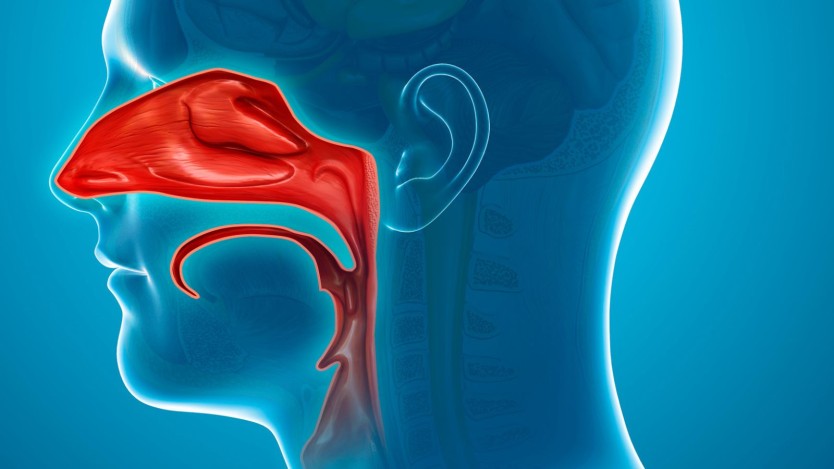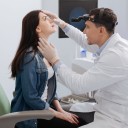Nasal Turbinates: What they are, Causes, Symptoms and Treatment

- What are nasal turbinates?
- Causes of turbinate hypertrophy
- Symptoms of turbinate hypertrophy
- Treatment for turbinate hypertrophy
- The turbinates are structures located on the inside of the nose, whose main function is to humidify, filter and warm the air that reaches the lungs, improving our respiratory quality.
- There are various factors to blame for the increase in turbinates and nasal obstruction, so detecting the cause and correctly diagnosing the anomaly are priority aspects in order to choose the most appropriate treatment.
- Radiofrequency treatment manages to eliminate nasal obstruction, reducing the nasal mucous membranes with electromagnetic energy in just 10 minutes.
What are nasal turbinates?
The turbinates are a structure present inside the nose, specifically on the side walls of the nasal cavity and separated by the septum, where there are three turbinates on each side: upper, middle and lower.
They are staggered one above the other from largest to smallest, with the largest being the lowest and the one that normally causes nasal obstruction.
These membranes are composed of bone in their central part, surrounded by numerous blood vessels and covered by nasal mucosa.
The functions of the turbinates are to humidify, filter and warm the air that reaches our lungs, improving our respiratory quality.
Although each turbinate has a specific task, it is the inferior turbinates that perform the most important one, which is to purify and filter the cold air we breathe in. They are also the most exposed and the ones that force their functioning, which causes them to dilate or hypertrophy easily.
In addition, there are many other factors that can alter its functioning, such as colds, allergies, smoking or alcohol consumption, leading to inflammation of the turbinates or rhinitis.

Do you need turbinates reduction surgery?
Request a free and immediate appointment with our specialists in otorhinolaringology
This structure stands out for its abundant blood supply, which makes them a very sensitive formation to changes in temperature.
But as you can imagine, it also exposes them to various pathologies or conditions, so we invite you to read on and find out what causes them, how they affect you and, of course, how we can help you to solve them.
Causes of turbinate hypertrophy
Turbinate hypertrophy is the chronic enlargement of the turbinates, mainly the inferior turbinates. This anomaly causes nasal congestion, hindering the natural flow of air through one or both nostrils, leading to discomfort that can become seriously aggravated.

It is usually caused by allergies and colds. However, there are other causes of turbinate enlargement, for example:
- Hormonal changes: due to taking drugs, pregnancy, puberty, conditions that alter hormone production, such as hyperthyroidism, etc. All of these can lead to an increase in mucous tissue and, therefore, an increase in the volume of the turbinates, causing nasal obstruction.
- Age: with the passage of time and normally, degeneration of the organism and due to underlying pathologies, it is possible to develop turbinate hypertrophy. This would lead to difficulties in breathing correctly through the nose, as well as nasal obstruction and abundant secretion of mucus.
- Obesity: weight gain usually leads to increased airway collapse, especially when resting or sleeping on the back. Obesity or excess weight causes a decrease in lung volume and increases ventilatory resistance (effort) in the upper airways, leading to abnormalities in the nasal passages such as turbinate hypertrophy.
- Staying in an inadequate space: it is quite possible that turbinate hypertrophy is caused by prolonged exposure to toxic substances or low temperatures. This causes the airways to make a greater effort to maintain a correct respiratory work, which leads to an increase in the size of the turbinates as well as that of other structures exposed to the same effort.
- Smoking and/or alcohol consumption: some lifestyle habits, such as smoking or excessive alcohol consumption, cause the turbinates to change and hypertrophy. Both ingestions cause the structure to develop abnormal functioning and degeneration until it collapses and permanently obstructs the nasal passages.
- Acute or chronic sinusitis: inflammation and infection of the sinuses can lead to the adjacent development of turbinate hypertrophy. Normally, when this situation occurs, the turbinates increase in size until they completely obstruct the nasal passages and generate more complex situations of both pathologies, forcing you to breathe only through your mouth.
- Septal or nasal septal deviation: when the deviation is pronounced, the work of breathing through the nose is more complex due to persistent nasal obstruction. The turbinates therefore have to work harder and become inflamed.
- Pharmacological treatment: it is possible that after treatment with steroids or nasal vasoconstrictors, a rebound effect may occur, causing inflammation of nasal structures such as the turbinates.
Symptoms of turbinate hypertrophy
The symptoms caused by enlarged turbinates can be diverse as well as asymptomatic or very annoying. Here is a breakdown of the most common ones related to turbinate hypertrophy:
- Permanent nasal congestion
- Physical tiredness
- Apnea and sleep disturbances
- Difficulty breathing through one or both nostrils
- Sore throat and facial pain
- Intermittent hearing discomfort
- Nosebleeds
- Loss of smell
If you detect several of these symptoms and they become more and more persistent, the best thing to do is to consult a specialist. Only they will know what the main cause of this discomfort is, and they will be the only ones to prescribe the most appropriate treatment for your case.
Remember, the symptoms of turbinate hypertrophy can be intermittent or asymptomatic, i.e. you will not notice any discomfort, although the possibility of them becoming chronic increases with the lack of treatment.
In the following section you can find out how this anomaly is diagnosed, as well as the treatments that solve it. You will see that these are simple and relatively quick interventions that will allow you to improve your quality of life and re-establish normal day-to-day life.
Diagnosis of turbinate hypertrophy
The diagnosis of turbinate hypertrophy can be made in several ways, usually painless and very short, approximately 5 to 10 minutes.
During the diagnosis, the ENT specialist will examine your nasal cavities by performing a rhinoscopy.
This test consists of visualising the inside of the nostrils with the help of a rhinoscope, an instrument that separates the nasal ala from the septum, increasing the field of vision, together with a front mirror and a light source.
Two visualisation techniques can be distinguished, which are classified as follows:
- Anterior rhinoscopy: allows visualisation of the elements that make up the anterior portion of the nostrils, in which the specialist can observe: mucosa, nasal vestibule, inferior turbinates and, in some cases, the middle turbinates, the roof of the nostrils and the choanae. To do this, you must keep your head straight, your mouth closed and breathe calmly through your nose.
- Posterior rhinoscopy: unlike the previous test, during this one the elements that make up the posterior, deep portion of the nostrils can be visualised. Here the specialist can observe: the upper and middle turbinates, the tail of the inferior turbinate and the vomer. For this test, you should keep your head straight and slightly tilted forward, your mouth open, your tongue relaxed and breathe calmly through your mouth and nose.
Although the test does not require any special preparation, it is advisable to clean the nasal passages beforehand using a saline solution for nasal application.

On the other hand, it is also possible that the Otorhinolaryngologist may find it necessary to use a vasoconstrictor to prevent bleeding during the anterior rhinoscopy or to administer a topical anaesthetic to prevent nausea during the posterior rhinoscopy.
In addition to performing the rhinoscopy, the doctor will ask you about your lifestyle and symptoms, as well as review your medical history. In this way, he or she will be able to make an accurate diagnosis and establish the best plan of action to solve the problem.
Do you suspect you are suffering from turbinate hypertrophy? You may have intermittent symptoms or symptoms similar to those of a common cold. In any case, do not hesitate to see a specialist to get an accurate diagnosis, only then can you resort to the treatment that best suits you.

Do you have turbinate hypertrophy?
Request a free and immediate appointment with our specialists in ENT and get your surgery date
Treatment for turbinate hypertrophy
It is possible to solve the problem of turbinate hypertrophy by different means or treatments, depending on the factor that has caused the enlargement of the structure and the particularities of each one. Below, we explain what each of them consists of:
Natural treatment
As we mentioned, treatment options vary depending on the cause of turbinate hypertrophy. If your problem is due to allergies or environmental irritants, you may be able to resort to natural treatment.
Natural treatment basically consists of eliminating or avoiding exposure to pollen, dust or pet dander, among others. To do this, ask your specialist about the products you can use to keep your home as sterile as possible to these factors, as well as natural remedies that can protect you in case you are exposed to them while you are outdoors.
Pharmacological treatment
Medication treatment is a very common remedy to reduce the size of the turbinates. As the name suggests, this treatment consists of medication, usually nasal corticosteroid sprays, allergy-specific drugs and, of course, partial or total reduction of exposure to irritants.
However, this treatment often fails to achieve a prolonged effect and the turbinates end up becoming chronically hypertrophic. Otorhinolaryngologists therefore recommend surgery to put an end to the problem.
Surgical treatments
Surgical turbinate reduction can be performed by various surgical methods. Some methods remove part of the bony structure and others try to reduce the turbinate tissue.
These treatments consist of:
- Turbinoplasty: this is a surgical technique used to modify the position of the turbinates. To do this, the surgeon uses endoscopic tools, accessing the inside of the nostrils until the turbinates are reached. This technique is also known as surgical fracture. During the operation, the size of the turbinate is reduced by sectioning a small part of it.
- Turbinectomy: like the previous technique, endoscopic tools are also used during this surgery. However, unlike turbinoplasty, during this surgical procedure all or part of the inferior turbinate is removed, cutting the necessary tissue to eliminate the obstruction.
- Radiofrequency: this is the most commonly used surgical technique. It is basically performed by introducing electrodes through the nostrils and placing them in the turbinates. Through these electrodes, electromagnetic energy is applied, increasing the temperature of the tissues without affecting the adjacent structures. This increase in temperature reduces the size of the turbinates.
- Laser: similar to radiofrequency treatment, the laser procedure cauterise the nasal mucosa to reduce the size of the turbinates and thus eliminate nasal obstruction.
Do you suffer from turbinate hypertrophy and need a solution now? You can request a free, immediate assessment appointment by clicking on the image below:

Do you need turbinates reduction surgery?
Request a free and immediate appointment with our specialists at Operarme
Medical disclaimer: All the published content in Operarme is intended to disseminate reliable medical information to the general public, and is reviewed by healthcare professionals. In any case should this information be used to perform a diagnosis, indicate a treatment, or replace the medical assessment of a professional in a face to face consultation. Find more information in the links below:
